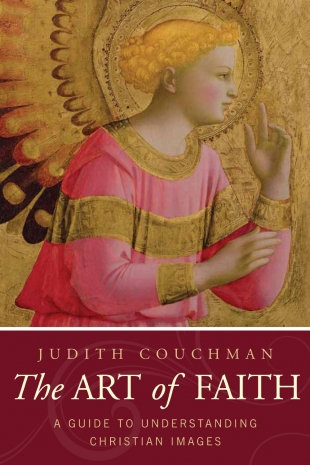Judith Couchman, a teacher of art history at the University of Colorado, has come up with a very creative and engaging way to study and appreciate Christian art. Her primary mission is to share the meanings of symbols in paintings and sculptures but there is also a secondary agenda: "to enhance faith, heighten worship, and perhaps cultivate a few armchair art historians."
What is the purpose of Christian art? Couchman begins with a quotation from Rowena Loverance:
"The purpose of Christian art is to deepen our encounter with God. From the tiny to the monumental, from a piece of personal jewelry used for private meditation, to a massive stained-glass window in a great cathedral, the function is the same: to catch the imagination, to open the heart and the mind, so that we may better hear the divine promptings."
Couchman points out that Christian art did not begin with great fanfare and accolades from the crowds but developed slowly. With great elan, the author catalogs and interprets the arcane world of Christian visual art. She is so at ease with this history lesson that we are able to see it as a playful adventure — hunting down the meanings in the miracles of Jesus, the Christian cross, angels, church doctors and saints, flowers and plants, trees and bushes, animals, sacred colors, the church year, objects and vessels, vestments and adornments, and much more.
Here is a sampler of some of the wonder-inducing details in The Art of Faith:
- The earliest images of Jesus depicted him as clean-shaven and short-haired, in the style of classical Roman portraits.
- Angels in the Bible delivered messages to people. See Fra Angelico for his Renaissance paintings of these heavenly beings.
- Locate Giovanni Lorenzo Bernini's masterpiece "The Ecstasy of Saint Teresa" where she is caught up in an exquisite moment of surrender and unity with God.
- The violet, which grows close to the ground, has been seen as a symbol of humility by many Christian painters.
- Early believers saw in a strawberry an emblem of a righteous person, especially the Virgin Mary.
- During the Renaissance, the unbridled energy of a horse represented lust.
- Because the lark flew high in the sky and sang there, it came to symbolize joyful prayers to God.
- Throughout sacred art eras, the heart was seen as the resting place of love, joy, courage, and sorrow.
